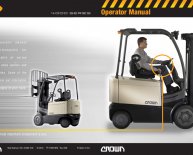
Land tools
A land tool is a practical way to solve a problem in land administration and management. It is a way to put principles, policies and legislation into effect. The term covers a wide range of methods: from a simple checklist to use when conducting a survey, a set of software and accompanying protocols, or a broad set of guidelines and approaches. The emphasis is on practicality: users should be able to take a land tool and apply it (or adapt it) to their own situation.
Land tools may complement each other, or they may offer alternative ways of doing something. For example, one tool may give overall guidance on how to address a land-related issue, while another may give detailed instructions on how to deal with a particular aspect of the same issue, such as checking whether the different needs and situations of women and men are taken into account.
For land tools to benefit the poor and disadvantaged, they need to have certain features:
- Affordable. They should be cheap enough both for the poor to afford (if they are required to pay user and maintenance fees), as well as for the government or other body that manages them.
- Equitable and gender-responsive. The land tools should seek to treat everyone fairly, with particular attention to inequalities faced by women as compared to men.
- Governance. The process of tool development should take into account how decisions are made regarding access to and use of land, how those decisions are implemented, and how conflicting interests in land are reconciled. Key elements of this include decision-making, implementation and conflict resolution, with emphasis on both process and outcomes.
- Subsidiarity. To make sure they are sensitive to local situations and needs, the land tools should be capable of being applied at the lowest appropriate level of authority: by the community or at the lowest level of local government.
- Sustainable. They should be capable of being implemented into the future without large-scale inputs from outside. Where possible, they should be self-financing through fees or taxes.
- Systematic, large-scale. The land tools should be capable of being used at a large scale - city-wide or across a whole country, not just in a one-off, local manner. That means they must be flexible enough to deal with a wide range of situations, and capable of being replicated easily and at little cost.
- Pro-poor. They should aim to reduce poverty. That means taking the situation and needs of the poor into account, and giving them a voice in decisions.
An Integrative Model Supporting the Holistic Approach to Land Issues
To reach the overall goal of poverty alleviation through land reform, improved land management and security of tenure, the GLTN Partners are in the process of developing18 key land tools which need to be addressed in order to deal with poverty and land issues at the country level, across all regions. Some of these tools are at an advanced stage of development and are being tested in selected countries (e.g. the Social Tenure Domain Model and Gender Evaluation Criteria), whereas others are still at the early stages of development.
The partners of GLTN believe that the existing lack of these tools is the main cause of failed implementation at scale of land policies worldwide. The18 tools under development are embedded in 5 overarching themes. However these tools cannot be addressed in technical isolation and 8 cross cutting issues have also been identified which need to be associated with the tool documentation, development and dissemination (e.g. land governance, gender, grassroots, etc.). These 18 tools are the basis for the GLTN work programme for the next 10 years.
In different countries different combinations of the 18 tools being developed and applied will be required. For example, tool development in a country on 3a regarding spatial units (on the Social Tenure Domain Model) might require development in conjunction with tools 1a (Enumerations for tenure security), 2d (Land readjustment (slum upgrading and/or post crisis) and 4c (Expropriation, eviction and compensation). For this reason, one cannot set up a perfect typology as all these tools are stand alones on the one hand but on the other hand they might have to be linked to other tools in different configurations depending on the country context.
The Land Tool Development section of the website provides two links, i.e. Themes, in which the tools are embedded, and Cross Cutting Issues.
The Challenge of Developing a Framework Which Meets the Needs of Multiple Social and Cultural Environments as well as the Highest Standards of Good Governance
One major challenge in the process of land tool development is to devise a flexible general framework which can be applied according to the needs of different countries. Another challenge is to ensure land policies take into account the broader urban governance principles of transparency, accountability, publicity, participation, and subsidiarity.
GLTN recognizes the demand for targeted tools. Among them are gendered tools, grassroots participation, culture or religiously formatted tools and land tools for post-conflict situations.

















